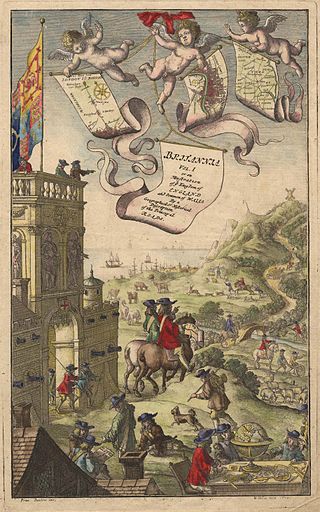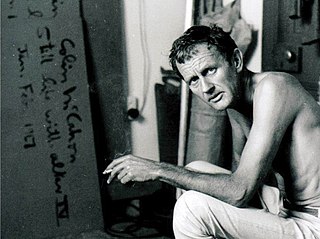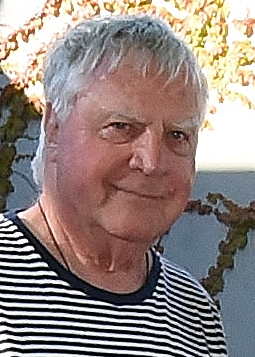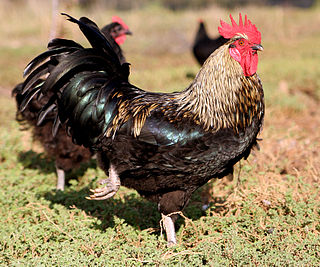
Thomas Bewick was an English wood-engraver and natural history author. Early in his career he took on all kinds of work such as engraving cutlery, making the wood blocks for advertisements, and illustrating children's books. He gradually turned to illustrating, writing and publishing his own books, gaining an adult audience for the fine illustrations in A History of Quadrupeds.

Francis Barlow was an English painter, etcher, and illustrator.

Colin John McCahon was a New Zealand artist whose work over 45 years consisted of various styles, including landscape, figuration, abstraction, and the overlay of painted text. Along with Toss Woollaston and Rita Angus, McCahon is credited with introducing modernism to New Zealand in the mid-20th century. He is regarded as New Zealand's most important modern artist, particularly in his landscape work.

Auckland Art Gallery Toi o Tāmaki is the principal public gallery in Auckland, New Zealand. It has the most extensive collection of national and international art in New Zealand and frequently hosts travelling international exhibitions.

George Edward Lodge FZS, was a British illustrator of birds and an authority on falconry.

Sir Mountford Tosswill "Toss" Woollaston was a New Zealand artist. He is regarded as one of the most important New Zealand painters of the 20th century.

Shane William Cotton is a New Zealand painter whose work explores biculturalism, colonialism, cultural identity, Māori spirituality, and life and death.

Hamish Henry Cordy Keith is a New Zealand writer, art curator, arts consultant and social commentator.

Jeffrey Harris is a New Zealand artist. Harris started his career in Christchurch, moving to Dunedin, New Zealand in 1969. In the early 1980s he worked briefly in the United States, before moving to Melbourne, Australia in 1986. In 2000 he returned to Dunedin, where he still lives. Largely self-taught, but mentored by notable New Zealand artists such as Michael Smither and Ralph Hotere, he has painted full-time since 1970.
Harry Rountree was a prolific illustrator working in England around the turn of the 20th century. Born in Auckland, New Zealand, he moved to London in 1901, when he was 23 years old.

David Tipling is a professional wildlife photographer. He has won the documentary award for the European Nature Photographer of the Year for his work on emperor penguins.

John Vernon Lord is an illustrator, author and teacher. He is widely recognized for his illustrations of various texts such as Aesop's Fables,The Nonsense Verse of Edward Lear; the Folio Society's Myths and Legends of the British Isles. He has also illustrated classics of English literature, including the works of Lewis Carroll and James Joyce.
Peter John Nahum is an English art dealer, author, lecturer, and journalist best known for his frequent appearances on the BBC television program Antiques Roadshow, in which he was present from 1981 to 2002. He discovered a Richard Dadd watercolor on the show which was subsequently sold to the British Museum.

The Cock and the Jewel is a fable attributed to Aesop and is numbered 503 in the Perry Index. As a trope in literature, the fable is reminiscent of stories used in Zen such as the kōan. It presents, in effect, a riddle on relative values and is capable of different interpretations, depending on the point of view from which it is regarded.

William Alexander Sutton was a New Zealand portrait and landscape artist.
Derek Robertson RSW SSA SAA is a Scottish artist. One of the signature members of the Society of Animal Artists, he is known for his paintings of wildlife and landscapes, and for his poetic narrative work consisting of paintings, constructions and installations. He has been elected several times on the Council of the RSW and has written and presented 5 television programs about his work and the wildlife he portrays and has written 5 books about his art: The Mugdrum, Highland Sketchbook, A Studio Under The Sky, Otters, An Artist's Sketchbook, "Living Landscapes" and Puffins: An Artist's Sketchbook. His work has also illustrated many other publications.
Milan Mrkusich was a New Zealand artist and designer. He was considered a pioneer of abstract painting in New Zealand. Retrospective exhibitions of his work were organised by the Auckland Art Gallery in 1972 and 1985, and at the Gus Fisher Gallery in 2009. A substantial monograph was published by Auckland University Press in 2009.

Patrick Ching (born c. 1963) is a Hawaiian conservationist and wildlife artist, ornithological illustrator, and author of children's books.

Desmond W. Helmore is a New Zealand artist and illustrator, known both for his fine art and for his scientific work depicting insects, not least illustrating the New Zealand Arthropod Collection. One of the country's most noted and prolific biological illustrators, over 1000 of his illustrations of insects were published in research papers from 1976 to 2006.
Selwyn Peter Webb was a New Zealand art dealer and gallery director. He was a supporter and promoter of art, and particularly contemporary New Zealand art, for over sixty years. Webb's work spanned public art museums, publishing and the founding of the Peter Webb Galleries and Webb's auction house.














